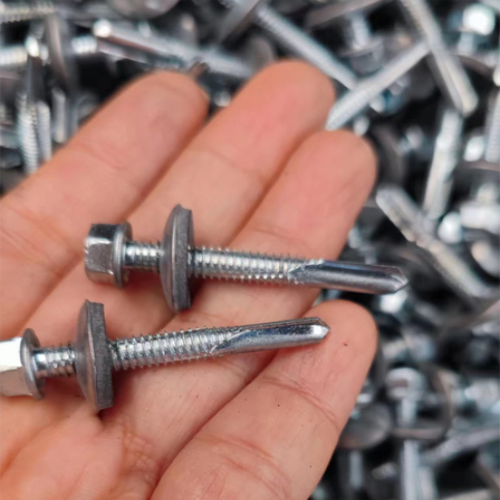lock washer or flat washer first manufacturer
The Battle of Washers Lock Washers vs. Flat Washers in Manufacturing
In the world of manufacturing, the use of appropriate fastening elements plays a crucial role in ensuring the durability and reliability of assembled products. Amongst the most commonly utilized fasteners are washers, specifically lock washers and flat washers. These humble components may appear trivial, yet they significantly influence the performance of various assemblies across multiple industries, ranging from automotive to construction.
Understanding the Basics What Are Washers?
Washers are thin plates or discs with a hole in the center, typically made from metal or plastic. They are used in conjunction with screws, bolts, and nuts to distribute load, prevent loosening, and reduce friction between surfaces. While flat washers offer a simple design aimed at load distribution, lock washers serve a more specialized purpose to prevent fastening elements from loosening due to vibrations or thermal expansion.
Flat Washers Simplicity and Functionality
Flat washers are the simplest form of washers. They provide a stable surface against which the fastener can grip, thus preventing the bolt or screw from damaging the material. The primary function of a flat washer includes load distribution, reducing the chance of damage to the surface being fastened. In applications where pressure is crucial, flat washers are favored for their ability to evenly distribute the load across a wider area.
Manufacturers often opt for flat washers in applications where surface protection and load distribution are essential. They are widely used in wood construction, plumbing, and sheet metal assembly, where the aesthetic and functional integrity of the surface is paramount. The ease of implementation, alongside cost-effectiveness, makes them a go-to choice for many manufacturing scenarios.
Lock Washers The Guardian of Fastenings
lock washer or flat washer first manufacturer

Lock washers, on the other hand, are designed with a more complex geometric structure that allows them to create friction between the fastener and the surface. Common designs include split lock washers and toothed lock washers, each serving to withstand vibration and prevent loosening. These washers are ideal in applications involving machinery where consistent vibration occurs, such as automotive engines, heavy machinery, and aerospace components.
The unique construction of lock washers enables them to bite into the material, creating a greater level of resistance against loosening. Manufacturers often trust lock washers to maintain the integrity of critical joints, where failure could lead to catastrophic outcomes. Therefore, for high-stakes applications, the choice of lock washer over flat washer becomes a matter of safety and reliability.
Which Comes First? Decision-Making in Manufacturing
When it comes to choosing between lock washers and flat washers, manufacturers must consider the specific requirements of their application. If load distribution is the primary concern, flat washers may be the best option. Conversely, if the application involves high vibrations or potential thermal changes, lock washers become essential.
In many cases, manufacturers will utilize both types of washers in conjunction. For instance, a flat washer may be installed first to distribute the load, followed by a lock washer to provide additional resistance against loosening. This synergy can help ensure that the assembly remains intact, even under the most challenging conditions.
Conclusion
The choice between lock washers and flat washers is far more than just a matter of preference; it is essential for the success of any manufactured product. Understanding the functional differences and appropriate applications for each type of washer allows manufacturers to create safer, more reliable, and efficient products. As industries advance and the complexity of machinery increases, the role of these small yet mighty fasteners will only grow in importance, emphasizing the need for informed decision-making about their use in manufacturing processes.
-
Top Choices for Plasterboard FixingNewsDec.26,2024
-
The Versatility of Specialty WashersNewsDec.26,2024
-
Secure Your ProjectsNewsDec.26,2024
-
Essential Screws for Chipboard Flooring ProjectsNewsDec.26,2024
-
Choosing the Right Drywall ScrewsNewsDec.26,2024
-
Black Phosphate Screws for Superior PerformanceNewsDec.26,2024
-
The Versatile Choice of Nylon Flat Washers for Your NeedsNewsDec.18,2024










